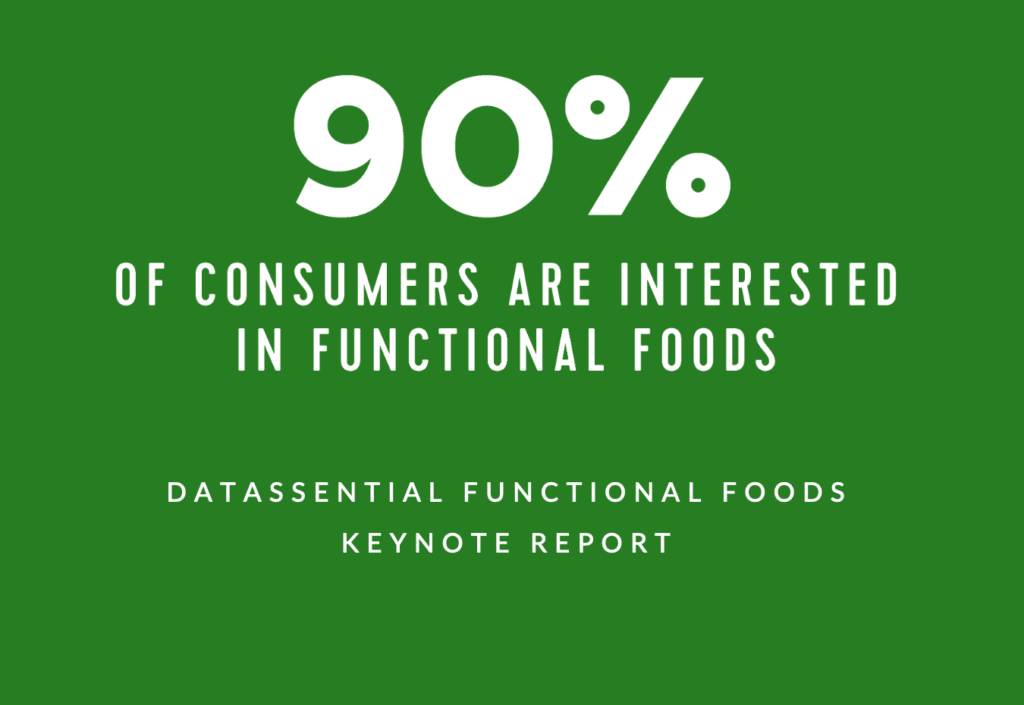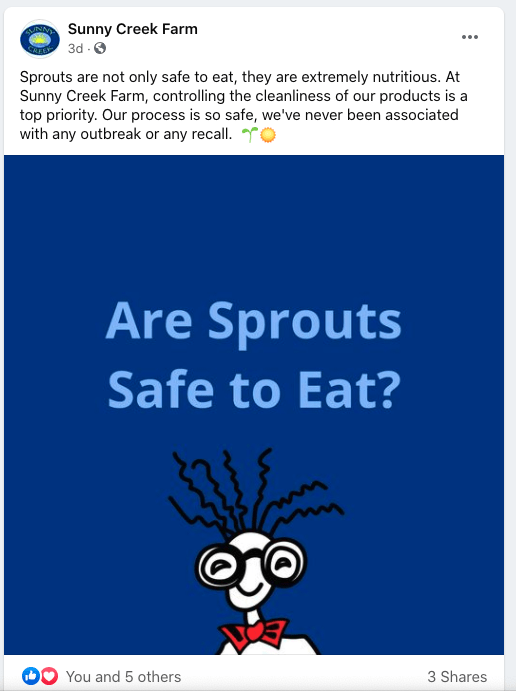September 24, 2020
Let Food Be Thy Medicine!
David Brashears

More and more Americans are becoming proactive about what foods they are consuming these days. In the light of a historic global pandemic, higher job stress and concerns with growing healthcare issues, consumers want to have their diet do more than just provide tasty meals. The growth in interest for what are called “functional foods” has been trending for several years and is now becoming a major part of the food industry conversation. In a recent report, Datassential, a foodservice industry research group, found that 90% of consumers are interested in functional foods.

What are functional foods?
The term “functional foods” has been used to describe foods (usually whole and/or organic) that carry compounds or features that support specific needs or goals of those consuming them. The implementation of functional foods is not really a new concept either. For generations, cultures around the world have looked to food to help them battle common ailments, provide improved performance and many other health benefits. A classic example that most people are familiar with is the use of fresh citrus fruit to treat scurvy—a disease caused by a deficiency in vitamin C which causes hemorrhaging and compromised healing of wounds—in sailors in the 1700s. Dr. James Lind, a Scottish surgeon, is the one accredited with discovering the benefits of citrus fruit to treat sailors with scurvy in the Royal Navy.
Today, there are hundreds of different foods that have been used to support consumers health needs including; improved vision, lowering cholesterol, improving cardiovascular function, fighting disease and many more. The current U.S. functional food market is projected to increase from about 300 billion dollars in 2017 to over 440 billion dollars by 2022 (Statista Report 2018). This market segment is becoming a bigger part of the overall food retail and food service market and will likely bare more influence on trends moving forward.
The best way to track those functional foods that are emerging as trends within the industry is to look at what concept chefs and menu developers are working on. Usually you will see new and interesting ingredients first appear in fine dining (from innovative chefs) and then propagate to market from there. Here’s a good diagram that shows the current trends in functional foods.

You can see that many of these ingredients are currently in the inception phase of their growth and will slowly be moving up the scale as they are introduced in more dishes and accepted by a wider market of consumers.
How are customers choosing their functional foods?
Modern food consumers are better informed than ever in the history of the world. This is one of the things that has driven the current evolution in functional foods. The issue continues to be the need to sift through the quality and accuracy of much of the information that’s available from different sources. At the end of the day, consumers want to feel relatively assured that the functional foods that they are adding to their diets are safe and effective.
Creative Energy has partnered recently with a brand called Sunny Creek Farm that produces a wide variety of fresh sprouts and organic produce. Through working with the Sunny Creek Farm team, we’ve learned a great deal about the behaviors and interests of progressive consumers that are wanting more from their groceries. There are three areas that seem to be of the highest value in educating and influencing functional food consumers.
The Science
With so much data at their fingertips, consumers are doing a lot of homework to find food-related solutions to improve their health. They’ve become better and better and sifting through reports from many different sources and finding data that delivers intriguing results. The first question they usually have is, “How good is the science?” There’s a big difference between a qualitative editorial article released by a blogger and a full scientific research paper that is administered by well-known medical and nutritional institutions. Consumers want to hear from true experts about the functional foods they are purchasing.
With products like sprouts, there has thankfully been a lot of well-respected research done that can be used to help educate consumers. Some of the top authorities around the world—like Johns Hopkins, Sanford Medical, Mayo Clinic and many others—have been researching and reporting on the benefits of broccoli sprouts (one of Sunny Creek Farms popular products). All you have to do is Google “broccoli sprout benefits,” and you will be inundated with a wealth of academic and scientific research reports that show all the ways these products benefit daily health. One of the key compounds that researchers have been studying, Sulforaphane, is readily available in several cruciferous vegetables (Arugula, Broccoli, Bok Choy, Cabbage, etc.), but can be 50 to 100 times more concentrated in the young broccoli sprouts—making it much easier to consume an effective amount without having to drastically alter your diet.

This scientific data becomes an invaluable tool for marketers to help educate consumers to encourage true brand advocacy. With scientific information, it becomes incredibly important to use a brand’s platform to disseminate information directly from the experts, rather than attempt to color the messaging in any way.
The challenge is how functional food science is portrayed in mainstream science. With functional food research, there is rarely a clear and direct conclusion directing the general population to consume these foods. There are just so many different variables in a person’s health and medical history that cannot be controlled, that medical professionals are just not going to be comfortable making a wide recommendation. In most cases, consumers need to study the research and then apply their own health conditions to make a personal decision. In the case of Sulforaphane, there are many research indications that the compound can help with a wide variety of conditions—from heart disease and type 2 diabetes to vision health and immunity boosting. As a marketer, it’s just important to help make sound research readily available to your audience.
The Safety
Another important consideration for many consumers is the safety of functional foods. With organic, fresh, and whole foods, there’s always a concern with the safety, and sustainability, of the production process. There have been several news stories that have revolved around consumers of some functional foods that have either had a poor reaction or have be exposed to dangerous bacteria or contaminants from the foods.

Sprouts are a prime example of this. In the late 80s and early 90s, the FDA released a report showing that there was a potential exposure to salmonella and E. Coli related to the consumption of raw sprouts. While this kind of data is critical to communicate with consumers and restaurants, it also created a very negative perception of sprouts as a whole. For many suppliers and growers of sprouts, it effectively destroyed their product demand. In the years following those reports, the industry has continued to improve their processes to ensure the safety of their products. However, the public perception has largely remained unchanged. In many cases, it means that the younger generations have not had any exposure to sprouts and don’t know how to include them in a diet plan.
Companies like Sunny Creek Farm have been producing safe sprouts for decades without ever having any recalls or contaminations with their product lines. In order to engage consumers to begin adopting sprouts as a functional food addition to their meal plans, it is important to educate them about these new processes and the quality assurances the brand has invested in. A strong social media campaign is a powerful tool to share information with interested consumers and answer questions to provide peace of mind.
The Simplicity

Another topic that is very important to modern consumers is, “How easy is this food going to be for me to add to my current diet?” Most people these days are already spread very thin with work, exercise, community service, and all the other things that demand their time. They are not interested in a function food—even if it has amazing health indications—that requires an hour to prepare. Great functional foods are those that can integrate seamlessly into the existing meal preparation process. The functional foods like kale, broccoli, nuts, grains, fruits, etc. are the most popular options not only because they are packed with beneficial compounds but also because they are relatively easy to prepare and combine with other ingredients in delicious recipes.
This is where good brand messaging can play a huge role. We’ve worked with several brands of all different sizes to develop unique “signature” recipes from our partners that highlight the benefits and ease of preparation of their products. Our goal has always been to focus on simplicity in our recipe development, while also putting a spotlight on the brands we are working with. We try and keep the ingredient list simple and familiar, and preparation time to 30 minutes or less. Here’s an example of a unique twist on homemade pizza developed for Sunny Creek Farm that shows how easy their products are to use.
Empowering a target consumer with some easy and delicious recipes is a powerful way to influence eating behaviors, while also giving them the opportunity to be a hit with their friends and family! Building brand advocates is all about build a strong reciprocal relationship between brand and buyer.
People want to be live full and happy lives where they can have all the experiences they want. Nutrition plays such a vital part in being able to accomplish this core goal, and functional foods are becoming a huge industry to help consumers reach that goal. For an agency like Creative Energy, it’s so satisfying to partner with these brands who are working diligently to provide good foods that positively impact wellbeing. If you are a functional food brand that is needing the expertise of a collaborative and creative group of people who have been working in the foodservice and food retail industries for nearly 30 years, we’d love to talk with you. You have a powerful story to tell, and we want to help you tell it as successfully as possible. Let’s talk!
Get insights delivered straight to your inbox.